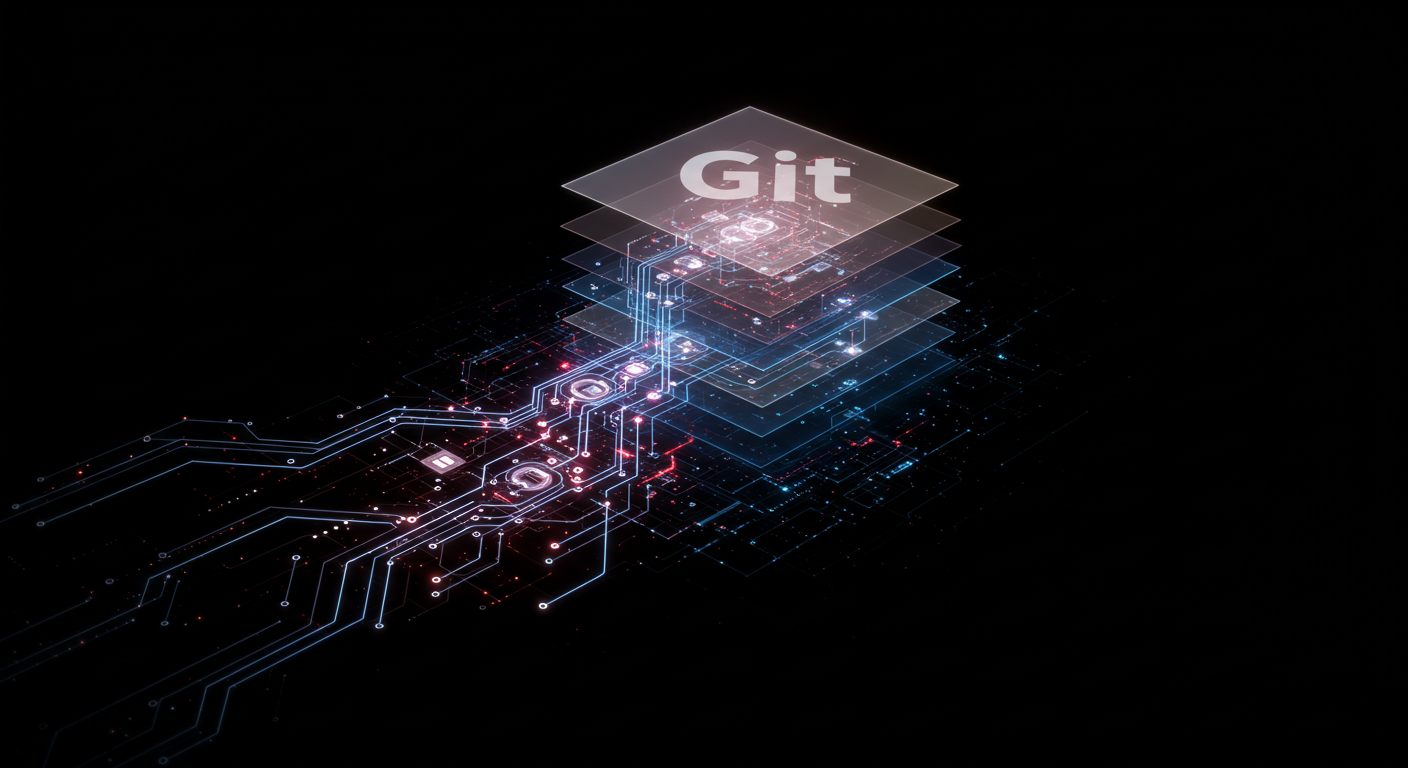
My Journey into Git: Demystifying Version Control for Every Explorer
My Journey into Git: Demystifying Version Control for Every Explorer
If you’ve ever found yourself with a project folder looking like my_project_final.py, my_project_final_v2.py, my_project_final_REALLY_final_I_swear.py, then you, my friend, have unknowingly yearned for something like Git. For a long time, especially when I was just starting out with coding and my various AI experiments, that was precisely my “version control system” – a chaotic mess of duplicated files and hopeful naming conventions. It was… stressful, to say the least.
Then I was introduced to Git, and while the initial learning curve felt a bit like deciphering ancient hieroglyphs, the “aha!” moment was a game-changer. Today, I want to share my perspective on Git, not as a seasoned DevOps guru, but as a fellow explorer in the tech world who found it to be an indispensable tool. This isn’t an exhaustive guide, but rather a friendly introduction to what Git is, why it’s so important (even for solo projects!), and the core concepts that helped me get started.
What is Version Control, Anyway? (And Why Should I Care?)
At its heart, version control is a system that records changes to a file or set of files over time so that you can recall specific versions later. Imagine it like having a super-powered “undo” button for your entire project, not just your last typed characters.
Why should you care?
- Fearless Experimentation: Want to try a radical new approach in your Python script for an AI model? Go for it! If it breaks everything, you can calmly revert to the last working version. No more “Ctrl+Z” panic!
- Tracking History: You (or your collaborators) can see who changed what, when, and (if you write good messages) why. This is invaluable for understanding how a project evolved and for debugging.
- Collaboration Made Sane: If you ever work with others, Git is the industry standard for merging changes from multiple people without stepping on each other’s toes (most of the time!).
- Branching Out Safely: You can create isolated “branches” to work on new features or fixes without affecting the main, stable version of your project.
Think of it as the ultimate safety net and project diary, all rolled into one.
My “Domdhi” Detour: My First Encounter with Git
I’ll be honest, my first real dive into Git wasn’t for a massive software project. It was when I started seriously trying to organize my collection of AI art prompts and the small Python scripts I was writing to automate tasks. I kept tweaking things, losing good versions, and generally feeling disorganized. Someone mentioned Git, and I initially dismissed it as “too complicated for my little scripts.”
Big mistake! Once I pushed past the initial jargon, I realized its power for even small, personal projects. The relief of knowing I could always go back to a version of my prompt that actually worked with a specific AI model was immense. It wasn’t just for teams of developers; it was for me.
Core Git Concepts You’ll Hear A Lot (The Gentle Version)
The terminology can be the most intimidating part. Here are a few key concepts explained simply:
- Repository (Repo): This is essentially your project’s folder, but supercharged. Git creates a hidden subfolder (called
.git) inside it to store all the history and version information.- My Analogy: Your project’s main treasure chest, with a secret compartment holding a detailed logbook of every time you added or changed a treasure.
- Commit: A “commit” is a snapshot of your project’s files at a specific point in time. You decide when to take this snapshot, and you always accompany it with a message explaining what changes you made.
- My Analogy: Pressing “Save Game” and giving that save a name like “Defeated the dragon, got cool sword.”
- Staging Area (or Index): Before you make a commit, you “stage” the changes you want to include in that snapshot. This lets you be selective about what gets saved together.
- My Analogy: Putting specific items from your inventory into a special “ready to save” box before hitting the main save button.
- Branch: A branch is like creating a parallel timeline for your project. You can make changes on a branch (e.g., to test a new AI model integration) without affecting your main, stable timeline (often called
mainormaster).- My Analogy: Stepping into an alternate dimension to try out wild experiments. If they work, you can bring them back!
- Merge: This is the process of taking the changes from one branch and integrating them into another.
- My Analogy: Bringing the successful experiment from your alternate dimension back into your main timeline.
- Remote (e.g., GitHub, GitLab, Bitbucket): A copy of your repository that lives on a server somewhere else (like the internet). This is essential for backing up your work and collaborating with others.
- My Analogy: A secure, cloud-based duplicate of your treasure chest and logbook.
graph TD
A["Working Directory <br/> (Files you edit)"] -- "1. Modify files" --> A
A -- "2. git add <files>" --> B["Staging Area (Index) <br/> (Changes to be committed)"]
B -- "3. git commit -m 'message'" --> C["Local Repository (.git) <br/> (Project history & versions)"]
C -- "6. git checkout <branch/commit> <br/> (Updates Working Directory)" --> A
C -- "4. git push" --> D["Remote Repository <br/> (e.g., GitHub, GitLab)"]
D -- "5. git pull / git fetch" --> C
A Super Simple Local Workflow (Just You and Your Computer)
Let’s say you have a project folder. Here’s a taste of a basic local Git workflow. (First, you’ll need Git installed on your computer. A quick search for “install Git” for your operating system will set you up.)
-
Initialize a Repository: Open your terminal or command prompt, navigate to your project folder, and type:
git initThis command creates that magic
.gitsubfolder, officially making your project a Git repository. -
Make Some Changes: Create a new file (e.g.,
my_amazing_script.py) or modify an existing one. -
Stage Your Changes: Tell Git you want to include the changes to
my_amazing_script.pyin your next commit:git add my_amazing_script.pyIf you want to stage all changes in the current folder (use with caution and awareness!):
git add . -
Commit Your Changes: Now, save that snapshot with a descriptive message:
git commit -m "Initial commit: Added the first version of my amazing script"Good commit messages are SO important – make them meaningful!
-
Repeat! Continue working: modify files,
git addthem, andgit committhem with new messages. You can see your project’s history by typing:git log
This is just scratching the surface, but these commands are the bread and butter of local version control.
Why This Matters Even for a Solo AI Explorer Like Me
You might think, “Okay, Domdhi, that’s nice for big software, but I’m just one person tinkering with AI prompts and scripts.” Here’s why Git is still your friend:
- Tracking AI Experiments: “Which version of this image generation prompt gave me that perfect cyberpunk cat?
git logknows!” - Safe Refactoring: Want to rewrite that complex Python function for your automation task? Do it on a branch. If it fails, your main version is safe.
- Reverting Mistakes: Accidentally deleted half your notes on a new AI tool? If you committed recently, you can likely recover it.
- Building Good Habits: If you ever plan to share your code, collaborate, or contribute to open-source AI projects, knowing Git is practically a prerequisite.
- Organizing Your “Digital Lab Notebook”: Think of your Git history as a detailed log of your AI explorations, complete with code, prompts, and notes on why you made changes.
Your Adventure with Git Awaits!
Git can seem like a mountain at first, but like any great exploration, you start with the first few steps. Focus on understanding the why behind version control, then gradually learn the basic commands. There are tons of fantastic interactive tutorials and resources online (GitHub’s own guides, Atlassian’s Git tutorials, Codecademy, etc.).
My advice? Don’t try to learn everything at once. Initialize Git in your next small project, even if it’s just a collection of notes or a single script. Get comfortable with add and commit. Then, when you’re ready, explore branching.
Git has truly transformed how I manage my projects, big and small. It brings a sense of order and safety to the often-chaotic process of creation and experimentation, especially in the fast-moving world of AI.
What was your “aha!” moment with Git, or what’s holding you back from trying it? Share your thoughts or favorite learning resources in the comments below!


